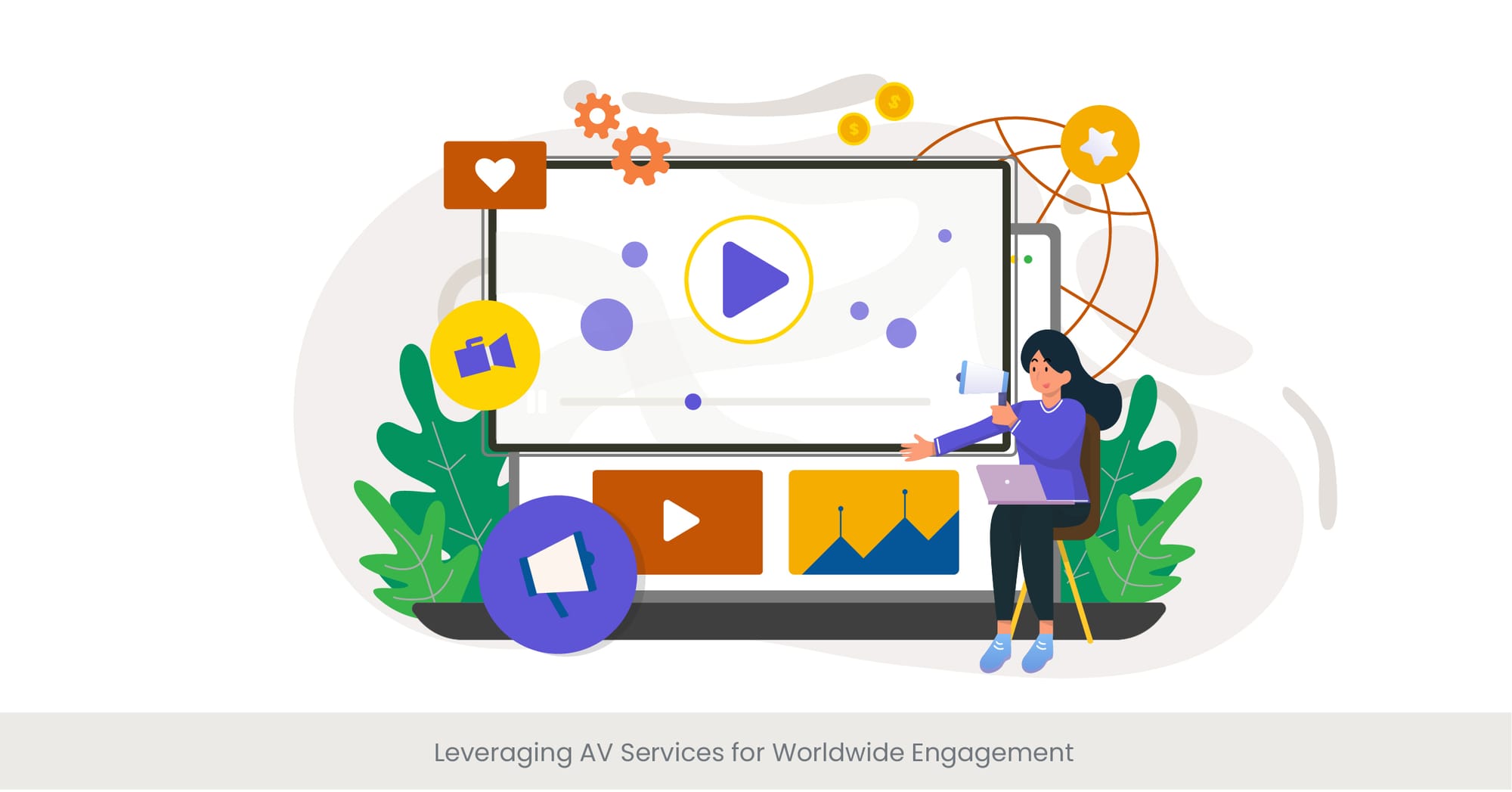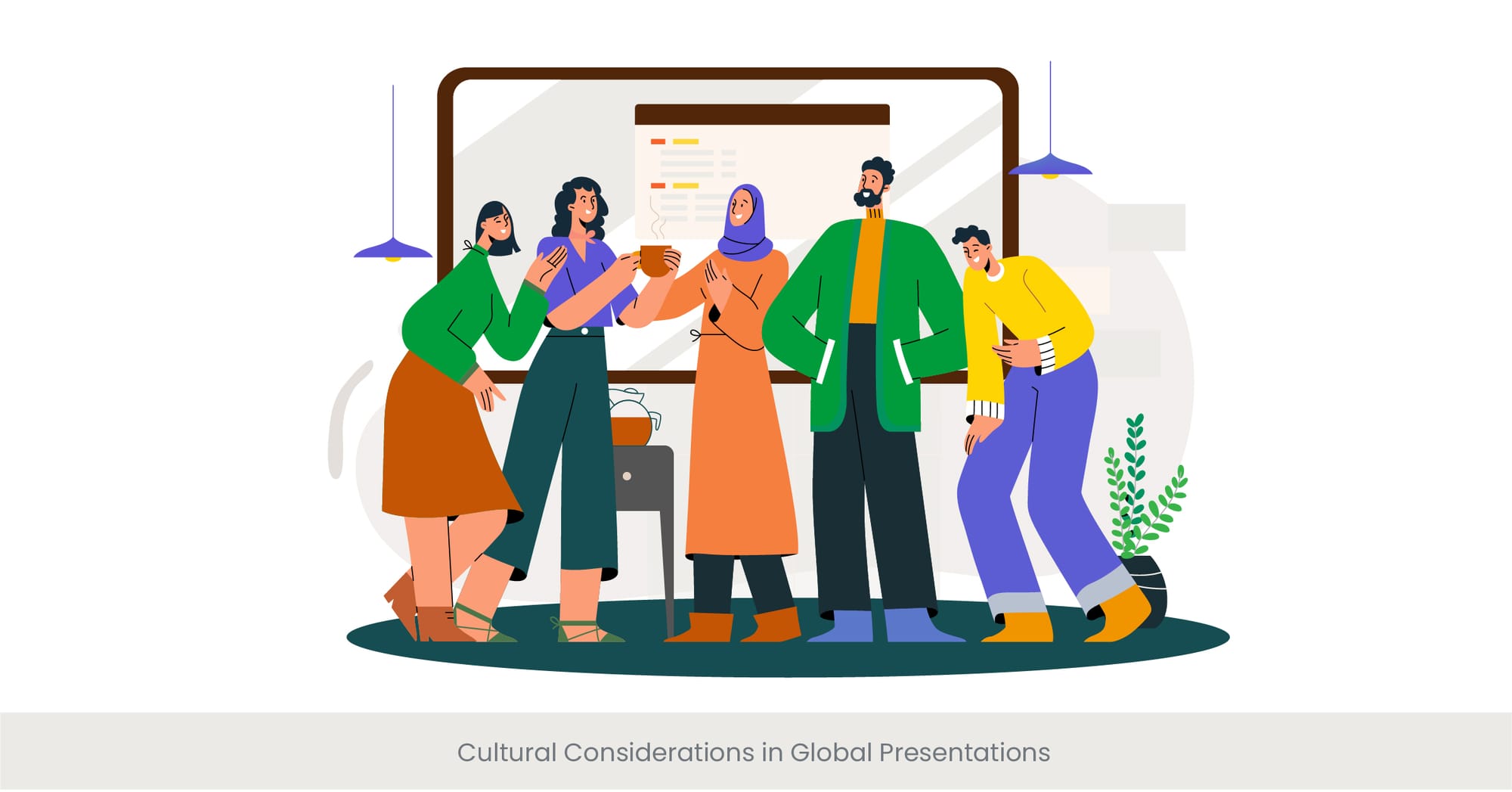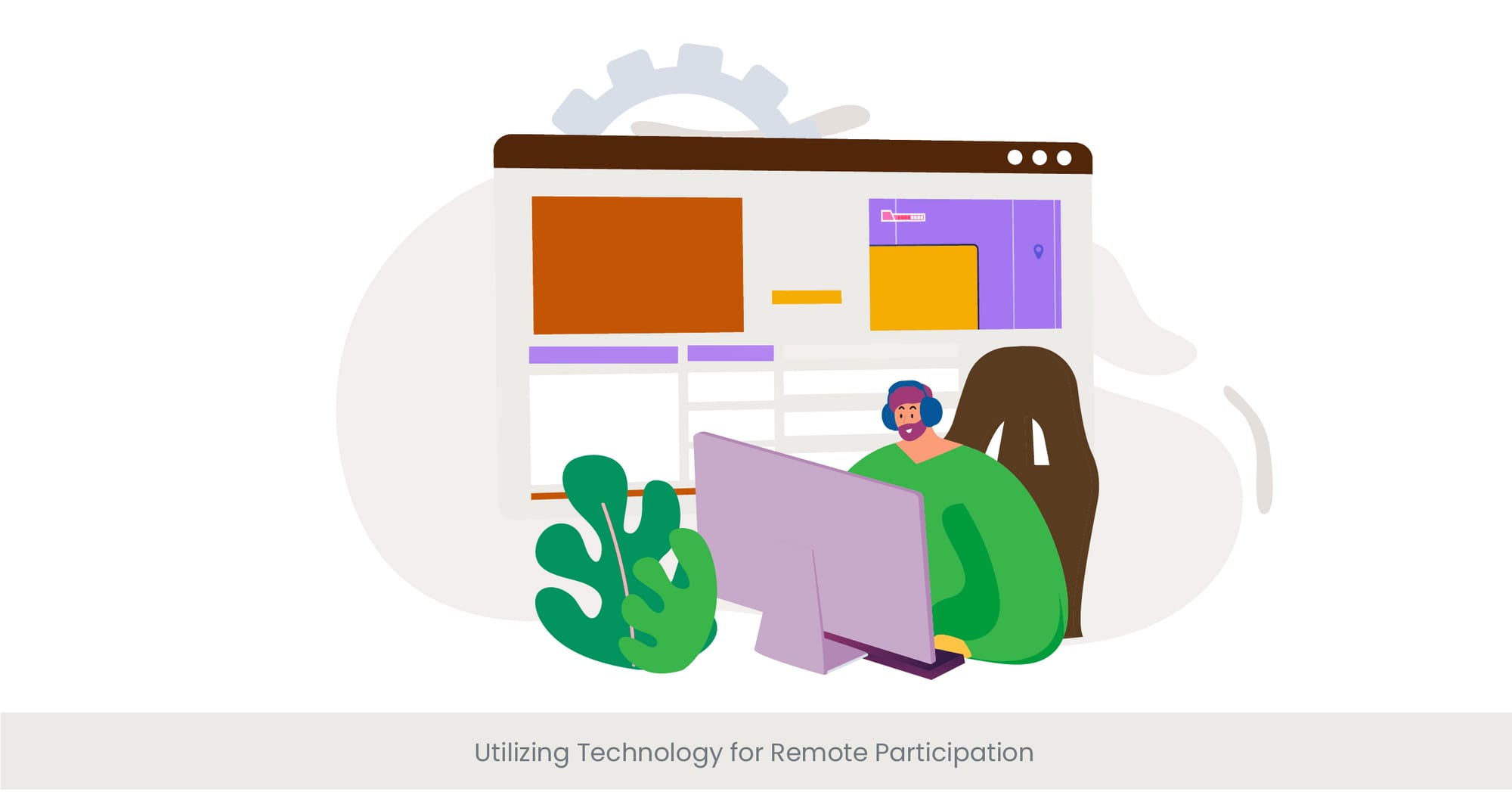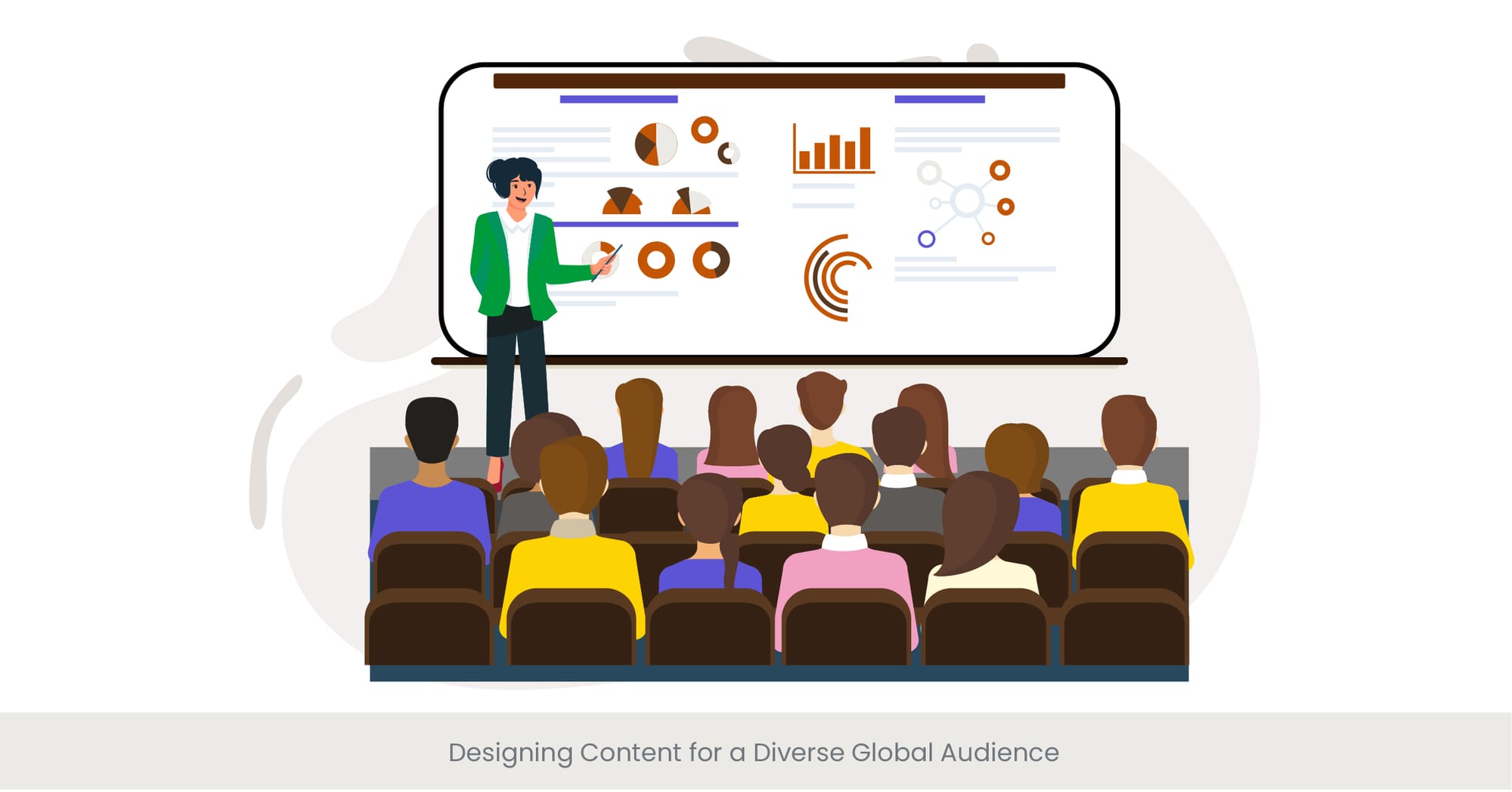
Strategies for Effective Global Communication
Introduction: The Bridge of Understanding
In the vast expanse of our global village, the ability to communicate effectively has never been more critical. Strategies for effective global communication not only bridge geographical divides but also cultural, linguistic, and temporal barriers. At the heart of these strategies lies the goal to convey messages clearly and efficiently, ensuring mutual understanding and fostering international collaboration. This section explores the essence of global communication strategies, highlighting their importance in connecting the world through global conference presentations.
Background: Crafting the Global Dialogue
Historically, global communication was a feat limited by technological and linguistic barriers. However, the advent of advanced communication technologies and the globalization of economies have transformed this landscape. Effective global communication now requires a nuanced understanding of diverse cultures, languages, and technological platforms. It hinges on the principles of clarity, empathy, and adaptability, allowing for seamless interaction across borders. This evolution underscores the significance of tailored communication strategies to navigate the complexities of global interactions, especially in the context of international events and conferences.
Real-World Applications: Bridging Worlds with Innovation
The implementation of effective global communication strategies is vividly illustrated through successful international conferences. For instance, the use of simultaneous translation services and culturally sensitive content design ensures that messages resonate with a diverse audience. Case studies, such as the United Nations conferences or the World Economic Forum, exemplify how leveraging technology and cultural insights can create an inclusive environment for participants from various backgrounds. These examples highlight the pivotal role of innovative communication strategies in facilitating meaningful dialogue and collaboration on a global scale.
Evidence of Success: A Quantitative Look
Research and data from reputable sources further validate the impact of effective communication strategies in global settings. According to a study by the Harvard Business Review, companies with highly effective communication practices had 47% higher total returns to shareholders compared to the least effective communicators. In the context of global conferences, the use of AV services for global conferences and international event audiovisual and technical support has been shown to increase engagement rates by up to 30%, according to a report by the Global Events Network. These statistics underscore the tangible benefits of adopting strategic communication approaches in overcoming global barriers and enhancing worldwide connectivity.
Leveraging AV Services for Worldwide Engagement

Introduction: The Power of Audiovisuals in Global Connection
In today's interconnected world, the role of audiovisual (AV) services in enhancing global engagement cannot be overstated. Leveraging AV services for worldwide engagement transcends traditional communication barriers, offering dynamic and immersive ways to connect, share, and learn. This section delves into how AV services serve as a pivotal tool in global conferences, transforming presentations from mere speeches into engaging, multisensory experiences that captivate audiences across the globe.
Background: The Evolution of AV in Global Settings
The evolution of AV services from basic sound systems and projectors to sophisticated, integrated digital solutions has revolutionized the way we approach international conferences and events. The advent of high-definition video, crystal-clear audio, interactive displays, and live streaming technologies has enabled presenters to reach wider audiences more effectively than ever before. This technological leap has not only improved the quality of global communication but also expanded the possibilities for collaboration and learning among diverse international communities.
Real-World Applications: Case Studies of AV-Enhanced Engagement
The impact of AV services on global engagement is best illustrated through case studies of landmark conferences. For instance, the TED Global conference series utilizes cutting-edge AV technology to share ideas worth spreading, achieving unprecedented levels of global viewer engagement. Similarly, the use of immersive AV setups at the Consumer Electronics Show (CES) allows attendees, both in-person and remote, to experience the latest technological innovations firsthand. These examples highlight the transformative power of AV services in creating engaging and inclusive environments for global audiences.
Evidence of Success: Statistical Insights
Empirical evidence further supports the effectiveness of AV services in global engagement. A survey conducted by the International Association of Conference Centres found that conferences employing advanced AV production services and reported a 40% increase in attendee satisfaction. Additionally, research by EventMB indicates that events utilizing comprehensive AV solutions see a 25% higher engagement rate on social media platforms, demonstrating the extensive reach and impact of well-executed AV support. These statistics underscore the critical role of AV services in not only enhancing presentation quality but also in fostering global connectivity and engagement.
Cultural Considerations in Global Presentations

Introduction: Embracing Diversity in Communication
In an increasingly globalized world, the significance of cultural considerations in global presentations cannot be understated. As professionals and academics gather from every corner of the globe to share knowledge, expertise and insights, understanding and respecting cultural diversity becomes paramount. This section delves into the nuanced realm of cultural considerations, emphasizing their critical role in designing and delivering presentations that resonate with a diverse global audience.
Background: The Mosaic of Global Audiences
The global audience is a mosaic of cultures, languages, and perspectives. Each culture brings its own set of values, communication styles, and expectations to the table, influencing how information is interpreted and received. The challenge for presenters is not only to convey their message effectively but to do so in a way that is culturally sensitive and inclusive. This requires a deep understanding of cultural nuances, including non-verbal cues, humor, and the use of language, to avoid misunderstandings and foster a positive environment for exchange.
Real-World Applications: Navigating Cultural Landscapes
Successful global presentations often hinge on the presenter's ability to navigate these cultural landscapes with empathy and insight. For example, incorporating local customs and languages into presentations can significantly enhance engagement and understanding. Events like the International Consumer Electronics Show (CES) and the World Economic Forum in Davos serve as prime examples of how global conferences can cater to a diverse audience by integrating cultural considerations into their programming and presentation design. These initiatives not only facilitate communication but also enrich the overall experience for attendees, fostering a sense of global community.
Evidence of Success: The Impact of Cultural Sensitivity
The positive impact of integrating cultural considerations into global presentations is well-documented. A study by the Journal of International Business Studies found that presentations tailored to the cultural backgrounds of the audience resulted in a 50% improvement in audience engagement and comprehension. Furthermore, conferences that prioritize cultural inclusivity report higher levels of participant satisfaction and return attendance, according to a report by the Global Conference Network. These findings underscore the importance of cultural sensitivity in overcoming barriers to communication and enhancing the effectiveness of global presentations.
Utilizing Technology for Remote Participation

Introduction: Bridging Distances with Innovation
The digital age has ushered in unprecedented opportunities to connect the world, with technology playing a pivotal role in bridging physical distances and fostering global participation. In the realm of global conferences, utilizing technology for remote participation has become a cornerstone strategy for inclusivity, allowing attendees from all corners of the globe to partake in events they might otherwise miss. This section explores the transformative impact of technology on remote participation in global conferences, highlighting how it extends the reach and effectiveness of global communication.
Background: The Evolution of Remote Participation
Historically, the concept of attending a conference without being physically present was unimaginable. However, advancements in internet connectivity, streaming technologies, and interactive platforms have made remote participation not only possible but highly effective. Today, virtual and hybrid event formats have become the norm, enabling a seamless fusion of in-person and online experiences. This evolution reflects a broader shift towards more accessible, flexible, and environmentally sustainable event production models, democratizing access to knowledge and networking opportunities on a global scale.
Real-World Applications: Virtual Engagement in Action
The practical applications of technology in enabling remote participation are evident in the success stories of various international conferences. For instance, the pivot from live events to virtual formats by major conferences like SXSW and the Adobe Summit during the COVID-19 pandemic demonstrated the robust capabilities of digital platforms in facilitating comprehensive online experiences. These events utilized live streaming, virtual networking rooms, and interactive Q&A sessions, effectively replicating the essence of physical attendance and fostering a sense of community among remote participants.
Evidence of Success: Empirical Insights
The effectiveness of technology in enhancing remote participation is supported by empirical data. A report by the Events Industry Council revealed that virtual events and hybrid events saw a 40% increase in attendance over purely in-person formats, with participants citing accessibility and convenience as key factors. Moreover, a survey conducted by Zoom found that 80% of respondents felt equally or more engaged in virtual meetings compared to in-person ones, underscoring the potential of technology to maintain, and even enhance, participant engagement in a remote setting.
Designing Content for a Diverse Global Audience

Introduction: Crafting Universally Resonant Messages
In an era where global conferences bring together individuals from various cultural, linguistic, and professional backgrounds, designing content for a diverse global audience is both a challenge and an opportunity. The essence of effective communication in this context lies in crafting messages that resonate universally, transcending the barriers of language, culture, and perspective. This section delves into the strategies and considerations crucial for creating content that appeals to and engages a wide-ranging international audience.
Background: The Complexity of Global Audiences
The diversity of global audiences presents unique challenges in content creation. Differences in cultural norms, communication styles, and expectations necessitate a nuanced approach to content design. This complexity demands a balance between universality and specificity, ensuring that content is accessible and relevant to a global audience while still acknowledging and respecting cultural differences. The task involves careful consideration of language, visuals, and context, aiming to foster inclusivity and connection among diverse participants.
Real-World Applications: Achieving Global Relevance
Effective strategies for designing content for diverse audiences are exemplified in successful global conferences and events. For instance, TED Talks employ a universal storytelling approach, combining relatable narratives with clear, concise language and compelling visuals. This method ensures that their content is accessible and engaging to an international audience. Similarly, the use of inclusive visuals and examples that reflect a spectrum of cultures and experiences can enhance the relatability and impact of presentation content, as seen in the World Health Organization's public health campaigns.
Evidence of Success: Validating Universal Design
The impact of thoughtfully designed content for global audiences is evident in engagement metrics and participant feedback. Research published in the Journal of International Marketing shows that culturally inclusive content design can increase audience engagement by up to 70%. Furthermore, a survey by the Global Conference Network found that events featuring content tailored to diverse audiences reported a 60% higher satisfaction rate among participants, highlighting the value of inclusivity in content creation.
Overcoming Language Barriers in Presentations

Introduction: Navigating the Linguistic Maze
In the global arena of conferences and presentations, language barriers stand as one of the most significant challenges to effective communication. The diversity of languages spoken by international audiences requires presenters and organizers to adopt innovative strategies to ensure their message is not only delivered but also understood. This section explores the various approaches and technologies available to overcome language barriers, highlighting their importance in facilitating clear and inclusive communication in global settings.
Background: The Linguistic Diversity Challenge
The linguistic diversity of global audiences can greatly impact the effectiveness of communication at international events. Presenters face the daunting task of conveying their ideas in a way that is accessible to non-native speakers, without diluting the complexity and depth of their message. This challenge emphasizes the need for careful planning and the utilization of language support services, such as translation and interpretation, to bridge the gap between languages and cultures.
Real-World Applications: Bridging the Language Divide
The use of simultaneous interpretation services, for example, has become a staple at major international conferences, allowing speakers to present in their native language while attendees listen in their own. Technology plays a crucial role in this process, with devices and apps providing real-time translation and ensuring a seamless experience for all participants. Additionally, the preparation of multilingual materials and the use of clear, simple language can aid in making content more accessible to a diverse audience.
Evidence of Success: The Impact of Linguistic Inclusion
The benefits of overcoming language barriers in presentations are clear. A study by the International Association of Conference Interpreters found that events offering interpretation services saw a 50% increase in participant satisfaction and engagement. Furthermore, the use of translation technologies has been shown to expand the reach of conferences, attracting a broader, more diverse audience. These outcomes not only enhance the experience for attendees but also increase the global impact of the presentations, demonstrating the value of linguistic inclusion in connecting the world through global conferences.
Global Trends in Conference Presentation Design

Introduction: Shaping the Future of Global Conferences
The landscape of global conferences is continually evolving, influenced by technological advancements, changing audience expectations, and the growing importance of sustainability and inclusivity. These dynamics are shaping new trends in conference presentation design, pushing organizers and speakers to innovate and adapt. This section delves into the current global trends in conference presentation design, highlighting how they are enhancing engagement, accessibility, and impact for audiences worldwide.
Background: The Evolution of Presentation Design
Traditionally, conference presentations relied heavily on static slides and one-way communication. However, the shift towards more interactive, engaging, and visually stimulating presentations reflects a broader change in audience engagement strategies. Today's global conferences are increasingly leveraging multimedia content, interactive technologies, and creative storytelling techniques to captivate and communicate with diverse audiences. This evolution is driven by the recognition that effective presentation design is crucial for knowledge transfer, networking, and fostering collaboration across borders.
When celebrating milestones, celebration and award presentations should reflect the spirit of the occasion. These presentations are an opportunity to showcase achievements and recognize team efforts. Incorporating vibrant visuals and a positive narrative will enhance the celebratory atmosphere and reinforce organizational values.
Real-World Applications: Innovations in Engagement
Innovative presentation designs are being implemented across various global platforms, from TED's impactful storytelling approach to the interactive sessions seen at the Consumer Electronics Show (CES). These conferences use high-quality visuals, augmented reality (AR), and virtual reality (VR) to create immersive experiences. Additionally, the use of audience response systems and live polling tools encourages active participation, transforming passive listeners into engaged contributors. These approaches not only enhance the presentation experience but also facilitate a deeper connection with the content, regardless of cultural or linguistic backgrounds.
Evidence of Success: The Impact of Modern Design Trends
The impact of these modern presentation design trends is evident in their ability to attract and retain audience attention, foster engagement, and facilitate understanding across diverse groups. A report by the Professional Convention Management Association (PCMA) highlights that conferences employing interactive and multimedia presentation techniques report a 30% higher attendee satisfaction rate. Furthermore, events that prioritize inclusive and accessible design practices see increased diversity in attendance, according to the Global Events Network, underscoring the significance of these trends in promoting global connectivity and learning.
Event showcase presentations are vital in spotlighting key moments and product launches. They are designed to captivate and inform large audiences, often highlighting innovative ideas, new products, or significant updates. A visually compelling showcase presentation can create buzz and ensure maximum audience engagement.
Explore our case study - Driving Forward: Unveiling JSW MG Motor India Private Limited to elevate your event showcase presentations now.
Case Studies: Impactful Global Conferences

Introduction: Learning from the Leaders
The world of global conferences is rich with examples of impactful events that have set benchmarks for excellence, innovation, and global reach. These conferences have successfully overcome the myriad challenges of international communication, cultural diversity, and technological integration. By examining specific case studies of impactful global conferences, we can glean insights into the strategies and practices that make for a successful international event. This section highlights a few standout conferences that have achieved significant impact, detailing how they have contributed to global connectivity and knowledge sharing.
Background: The Pillars of Successful Global Conferences
Impactful global conferences often stand on the pillars of strong thematic relevance, inclusive participation, innovative use of technology, and effective communication across cultural and linguistic barriers. These events serve as platforms for the exchange of ideas, fostering professional networks and advancing global cooperation. The success of these conferences is measured not just by the number of attendees but by the depth of engagement, the spread of knowledge, and the tangible outcomes they generate.
Creating impactful conference presentation designs is essential for capturing attention and delivering key messages effectively. A well-structured conference deck not only highlights data but also tells a compelling story that keeps the audience engaged. Design plays a pivotal role in shaping audience perception and leaving a lasting impression.
Leverage our expertise for your next high-stakes presentation. Contact us today.
Real-World Applications: Exemplars of Excellence
One notable example is the World Economic Forum (WEF) in Davos, which brings together leaders from across the globe to discuss and shape global, regional, and industry agendas. The WEF exemplifies how to leverage a mix of high-level discussions, collaborative sessions, and innovative presentation formats to address complex global issues.
Another exemplar is the International Consumer Electronics Show (CES), renowned for its vast showcase of technological innovations. CES demonstrates the power of AV services and interactive technologies in creating an immersive experience that transcends geographical boundaries, attracting a global audience both in-person and online.
The TED Conference series also stands out for its ability to distill complex topics into engaging presentations that reach a global audience. TED's emphasis on storytelling and visual communication serves as a model for creating content that resonates across diverse cultural contexts.
Evidence of Success: The Metrics of Impact
The impact of these conferences can be seen in their wide reach and the conversations they spark worldwide. For instance, the WEF reports that its annual meeting has helped forge numerous international collaborations and policy frameworks. CES boasts of catalyzing tech industry growth and innovation, drawing over 170,000 attendees from around the country and globe. TED Talks, with their online platform, have amassed billions of views, spreading ideas and inspiring action across continents.
These case studies not only showcase the potential of global conferences to bridge divides and foster international collaboration but also highlight the strategies that contribute to their success and lasting impact.
Networking Strategies for Global Events

Introduction: The Art of Connection
In the context of global conferences and events, networking transcends mere social interaction, evolving into an art form that fosters professional relationships, collaborations, and knowledge exchange across borders. Effective networking strategies are essential for maximizing the opportunities these events offer, enabling participants to connect, share insights, and expand their global reach. This section explores key strategies for effective networking in global events, highlighting the role of thoughtful engagement and technology in bridging the gap between diverse participants.
Background: The Foundation of Global Networking
Networking at global events is underpinned by the principles of openness, respect, and mutual benefit. Given the diverse makeup of attendees, successful networking requires an understanding of cultural nuances, effective communication skills, and the ability to find common ground among varied perspectives. The rise of digital platforms and social media has also transformed networking practices, offering new ways to connect before, during, and after events.
Real-World Applications: Strategies in Action
Effective networking strategies in global events often involve a mix of structured and informal opportunities designed to facilitate meaningful connections. For example, breakout sessions, roundtable discussions, and speed networking events allow participants to engage in focused conversations with peers sharing similar interests. The use of event apps and social media hashtags enables attendees to connect digitally, schedule meetups, and continue conversations beyond the event space.
In addition, offering culturally diverse networking settings at corporate events, such as themed receptions or cultural exchange workshops, can enhance the inclusivity and appeal of networking opportunities, catering to the wide array of preferences and comfort levels among international attendees.
Evidence of Success: The Impact of Effective Networking
The success of networking strategies at global events can be seen in the lasting relationships formed, the collaborations initiated, and the feedback from participants. Surveys from events like the Global Entrepreneurship Summit and the International Innovation Conference report high levels of participant satisfaction with networking opportunities, citing them as a key factor in their decision to attend future events. Furthermore, studies indicate that attendees who actively engage in networking activities are more likely to report tangible outcomes, such as new partnerships, project ideas, or business leads, demonstrating the critical role of networking in achieving the goals of global events.
Effective collaborator meeting presentations foster productive discussions and align team goals. These presentations require clarity, conciseness, and strategic visuals to ensure everyone is on the same page. When presenting to internal stakeholders, focus on actionable insights and shared objectives to drive team collaboration and decision-making.
Discover how engaging designs can transform your collaborator meetings. Read our guide.
The Future of Global Event Connectivity

Introduction: Envisioning the Next Horizon
As we stand at the crossroads of technological advancement and increased global interconnectivity, the future of global events is poised for transformative changes. These changes promise to redefine how we conceive of, participate in, and benefit from international gatherings. This section explores the emerging trends and innovations that are shaping the future of global event connectivity, highlighting the potential for greater inclusivity, engagement, and collaboration across continents and cultures.
Background: The Evolution of Event Connectivity
The evolution of global event connectivity is marked by rapid technological advancements that have expanded the possibilities for virtual and hybrid events. From the early days of teleconferencing to the sophisticated digital platforms of today, each leap forward has made it easier for people around the world to connect, learn, and collaborate. As we look to the future, emerging technologies such as augmented reality (AR), virtual reality (VR), and artificial intelligence (AI) are set to further revolutionize the experience of global events, making them more immersive, interactive, and accessible than ever before.
Real-World Applications: Pioneering Innovations
The future of global event connectivity is already taking shape through pioneering applications of technology. For instance, VR conferences allow participants to interact in a fully immersive 3D environment, breaking down the barriers of physical distance and creating a sense of presence and engagement that rivals in-person events. Similarly, AI-powered networking tools are making it easier for attendees to find and connect with like-minded individuals, facilitating meaningful exchanges and collaborations.
Furthermore, the integration of AR in event presentations and exhibitions offers new ways to visualize complex information and engage audiences, transforming the passive viewing experience into an interactive exploration. These technologies not only enhance the connectivity of global events but also open up new avenues for creativity, learning, and interaction.
Evidence of Success: The Promise of a Connected Future
The potential of these emerging technologies to enhance global event connectivity is supported by early successes and enthusiastic feedback from participants and organizers alike. Surveys from virtual and hybrid events incorporating elements of VR and AI report significantly higher levels of attendee engagement and satisfaction, compared to traditional formats. Additionally, case studies of AR applications in exhibitions and presentations highlight increased retention of information and positive audience reactions, underscoring the transformative impact of technology on the entire event and experience.
As we look ahead, the continued evolution of these technologies promises to further democratize access to global events, enabling wider participation, fostering deeper connections, and facilitating the exchange of ideas on an unprecedented scale. The future of global event connectivity is not just about more event venues and overcoming geographical distances but about creating a more integrated, interactive, and inclusive global community.
Need a custom presentation design solution? Contact INK PPT for expert help.
Frequently Asked Questions (FAQs)
What AV equipment is needed for a conference?
Essential AV equipment for conferences includes high-quality microphones, speakers, mixers, projectors, screens, and video conferencing tools for hybrid events. The specific rental equipment needs may vary based on the size of the event, the venue, and the level of interaction desired.
What is conference AV?
Conference AV refers to the audiovisual systems and services used to enhance presentations, facilitate communication, and engage audiences during conferences. This encompasses sound systems, video projection, lighting, and often, advanced technologies such as live event streaming and interactive displays.
What are AV services?
AV services involve the provision, setup, and management of audiovisual technology to support events, meetings, and presentations. These services ensure that all technical aspects of the production of the event run smoothly, from sound and visuals to live streaming and recording.
What does AV stand for in an event setting?
In an event setting, AV stands for AudioVisual. It encompasses all the technology and services related to sound (audio) and sight (visual), crucial for delivering effective and engaging presentations and experiences.
What does Converge Technology Solutions do?
Converge Technology Solutions is a company that provides IT solutions and services, including cloud computing, cybersecurity, and digital infrastructure. While not specifically focused on AV, they may offer technologies and services to clients that support the digital aspects of conference presentations and connectivity.
What is the number one technology conference in the world today?
The Consumer Electronics Show (CES) is often regarded as the leading technology conference globally, showcasing the latest innovations in consumer electronics, IT, and related fields. It attracts attendees from all over the world, offering a glimpse into the future of technology.
What is audio visual in event management?
In event management, audiovisual (AV) encompasses the tools and techniques used by project managers to deliver sound and visual content to an audience. This includes microphones, speakers, projectors, screens, and video equipment, all managed to enhance the event experience.
What is audio visual support?
Audiovisual support refers to the technical assistance provided to ensure the effective use of AV equipment during events. This includes setup, operation, and troubleshooting of AV equipment rental systems to facilitate seamless presentations and communication.
What is a technology meeting?
A technology meeting is a gathering that focuses on the discussion, demonstration, and exploration of technological advancements and innovations. It can range from small, internal company meetings to large international conferences.
How do you set up a conference room?
Setting up a conference room involves arranging seating, installing AV equipment, ensuring good acoustics, and providing necessary connectivity options like Wi-Fi. The setup should facilitate easy viewing of presentations and comfortable interaction among participants.



%20(1).jpg)
%20(1).jpg)


